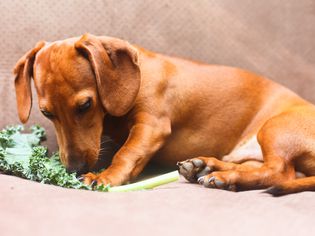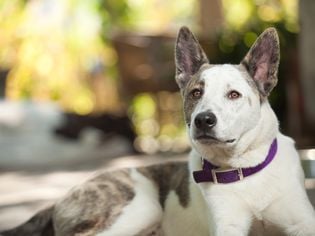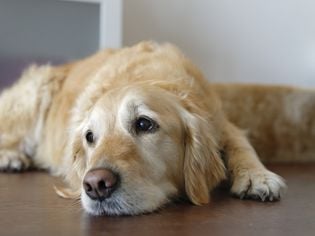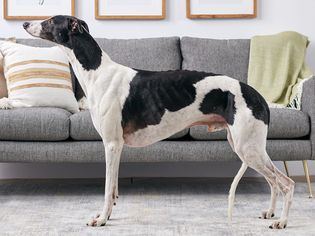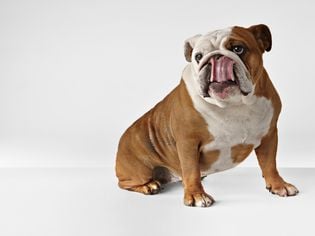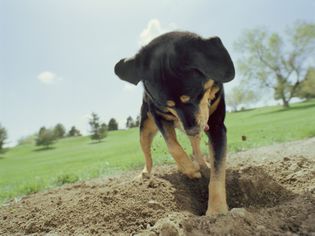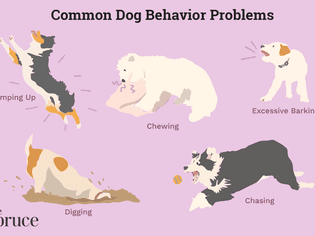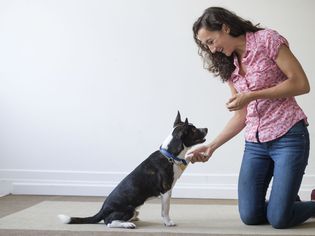The Japanese chin, also referred to as the Japanese spaniel, is a relatively rare toy breed with a distinctly noble and ancient heritage. This dog is known for their large flattened face, wide-set eyes with that look of perpetual astonishment, glossy coat, and long floppy, feathered ears.
The breed was actually thought to originate in China before becoming popular in Japan. Today, these dogs are loved for their elegant appearance, vocal personality, and the fact that they make perfect lap dogs.
Learn more about the Japanese chin, including the breed’s history, care needs, and temperament.
Breed Overview
GROUP: Toy
HEIGHT: 8 to 11 inches (to the withers)
WEIGHT: 4 to 9 pounds
COAT: Long, sleek and smooth coat
COAT COLOR: Black and white; lemon and white; sable and white; red and white; black, white, and tan
LIFE SPAN: 10 to 14 years
TEMPERAMENT: Alert, loyal, loving, independent, intelligent
HYPOALLERGENIC: No
ORIGIN: China (or possibly Korea)
Characteristics of the Japanese Chin
The Japanese chin is known for being even-tempered, loyal, and affectionate. They can also be fond of curling up on your lap. And, thanks to their small size, they can do well living in an apartment.
Japanese chins are renowned for their climbing abilities, and this is one of the reasons they are often described as being "cat-like." It is not unusual to find them perched on a high and cozy vantage point within the home—just like a cat. This dog is also a fastidious self-groomer, even when using the litter box.
While the Japanese chin can be reserved with new people and pets, they are generally an incredibly social and very loyal companion when introductions are done appropriately. This is a companion dog who shouldn’t be left alone for long periods, as they can suffer from separation anxiety.
| Affection Level | High |
| Friendliness | High |
| Kid-Friendly | Medium |
| Pet-Friendly | Medium |
| Exercise Needs | Medium |
| Playfulness | Medium |
| Energy Level | Medium |
| Trainability | Medium |
| Intelligence | High |
| Tendency to Bark | Low |
| Amount of Shedding | Medium |
History of the Japanese Chin
There is no doubting the longevity and aristocratic background of the Japanese chin, but their earliest introductions are still debated amongst historians.
While they are believed to have originated in China (or possibly even Korea), it is widely recognized that it was the Japanese nobility that nurtured the highly-prized companion breed from perhaps as far back as 1,000 years ago.
By the middle of the 19th century, when Japan began actively trading with other countries after over two centuries of self-imposed seclusion, the Japanese chin was often offered as a highly prized gift to naval officers or sold to visiting traders and sailors. This led to their gradual introduction in Western countries.
When future King Edward VII of Great Britain married his wife Alexandra in 1863, she received a Japanese chin as a gift, and she became a lifelong lover of the breed, helping them to gain popularity in Great Britain and America.
The breed was first recognized by the AKC in 1888, and is often also referred to as a Japanese spaniel. The Japanese chin is closely related to the Pekingese.
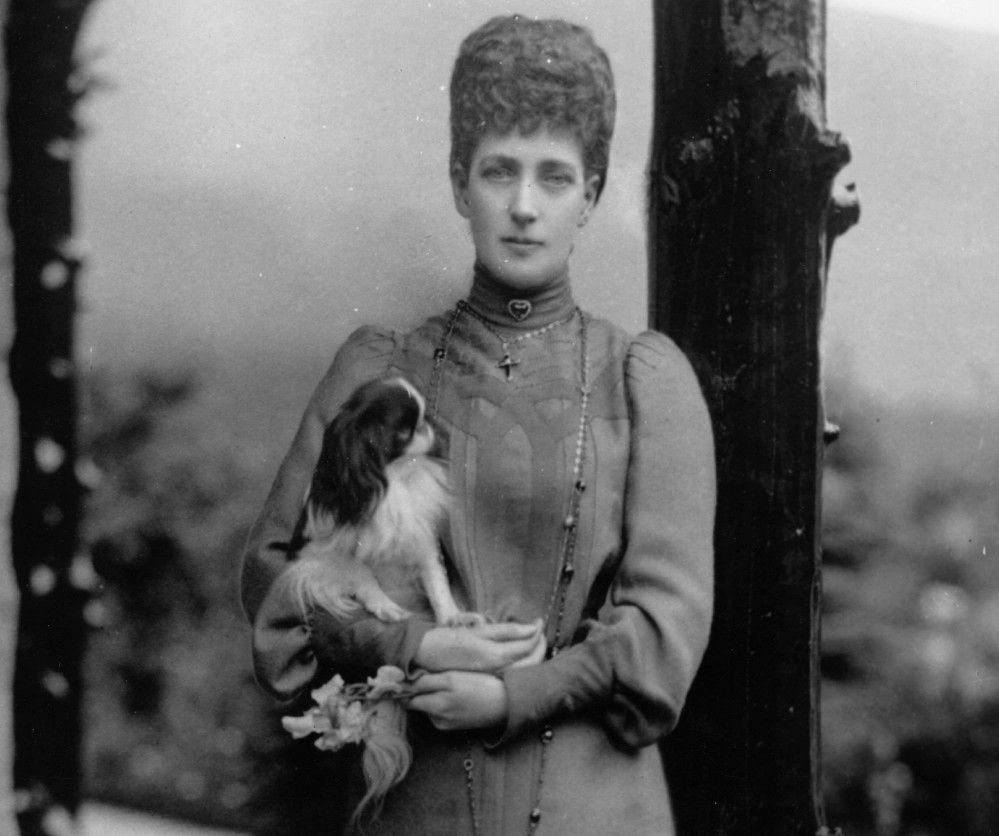
Japanese Chin Care
Caring for this breed can be somewhat low-maintenance. It is not known for being one of the most active breeds but it is still important that your dog receives an appropriate amount of exercise. While the Japanese chin has a long, smooth, soft, and glossy coat, it is not as challenging to maintain as other long-haired breeds.
Exercise
Just because the Japanese chin may enjoy snuggling on a lap, it doesn't mean they won't relish a nicely paced walk, too. Walk your dog once or twice a day at a leisurely pace for 15 minutes at a stretch. Using a harness, rather than just a collar and leash, can take the strain away from their delicate neck area. This dog does not have endurance, so it's best to leave your pup home when hiking or jogging.
Because it is classed as a flat-faced/brachycephalic breed, care must be taken to keep the dog comfortable in hot weather, especially when exercising. Due to their short snout, the Japanese chin can be more prone to heat intolerance and heat stroke, which can be exacerbated by breathing difficulties, so extra vigilance is required in warmer temperatures.
Grooming
The Japanese chin's coat does not tend to mat, but it's best to regularly attend to it so it does not tangle. A weekly brush-out is recommended—this is especially important when it goes through its seasonal shedding. The dog's coat will not require any clipping or scissoring.
These dogs groom themselves much like cats do, so you probably won’t need to bathe your pet that often—once a month may be enough unless they get dirty.
The breed is known for having nails that grow very quickly, so it is important to ensure that your dog's nails are always kept trimmed to an appropriate length. Also, check your dog’s ears on a regular basis to look for signs of infection, irritation, debris, or wax, and clean the ears gently using a solution made specifically for dogs.
Training
The chin is an intelligent breed, but they have a reputation for being stubborn, so a little patience and extra perseverance may be required when it comes to training.
Many owners of this breed potty train their Japanese chin. You can toilet train this breed at any age, though it is best done when the puppy is between 8 and 12 weeks old.
These little dogs can also be trained to do tricks. They even do what’s known as “the Chin spin” when they’re excited, so you might be able to train your pet to do it on command.
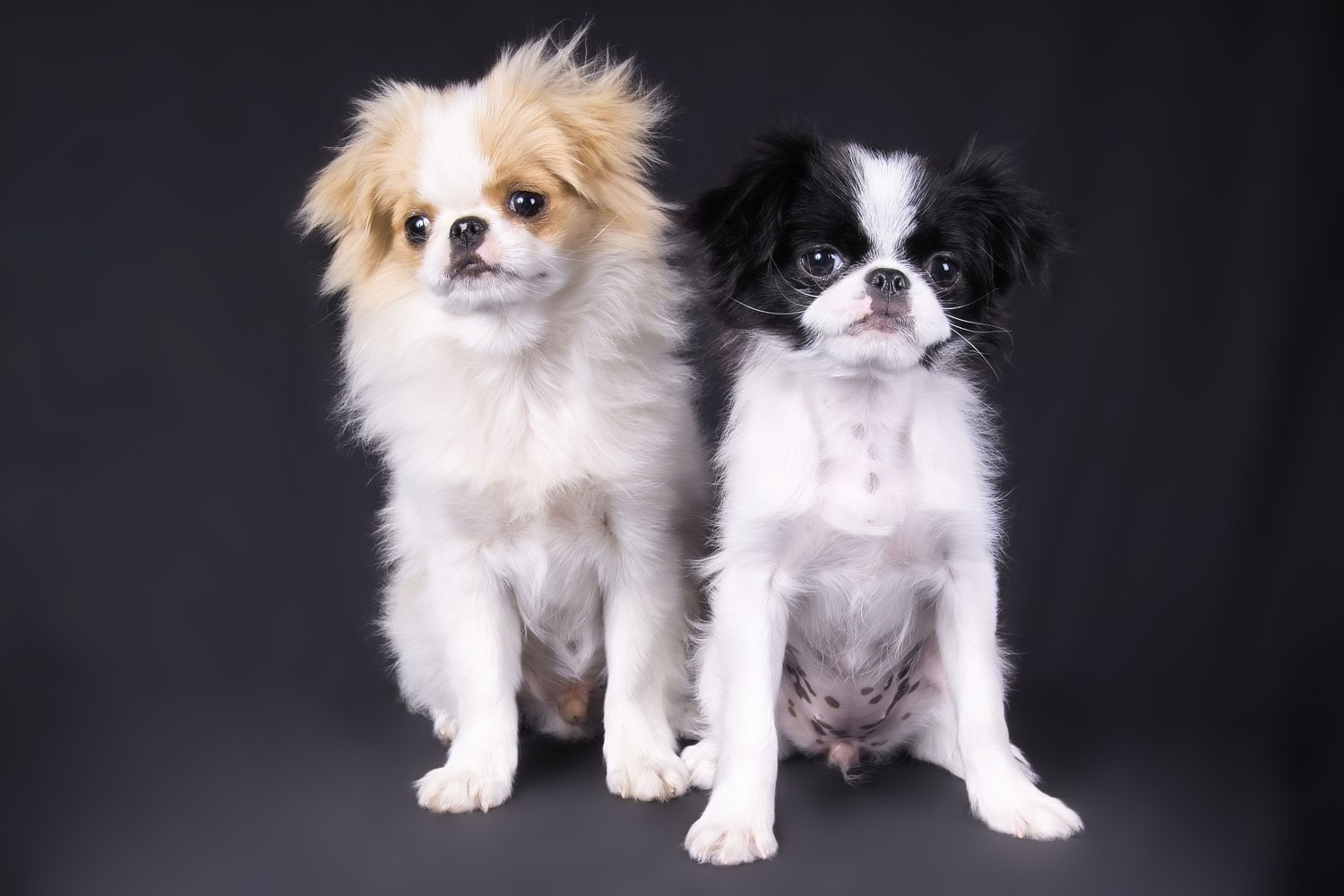
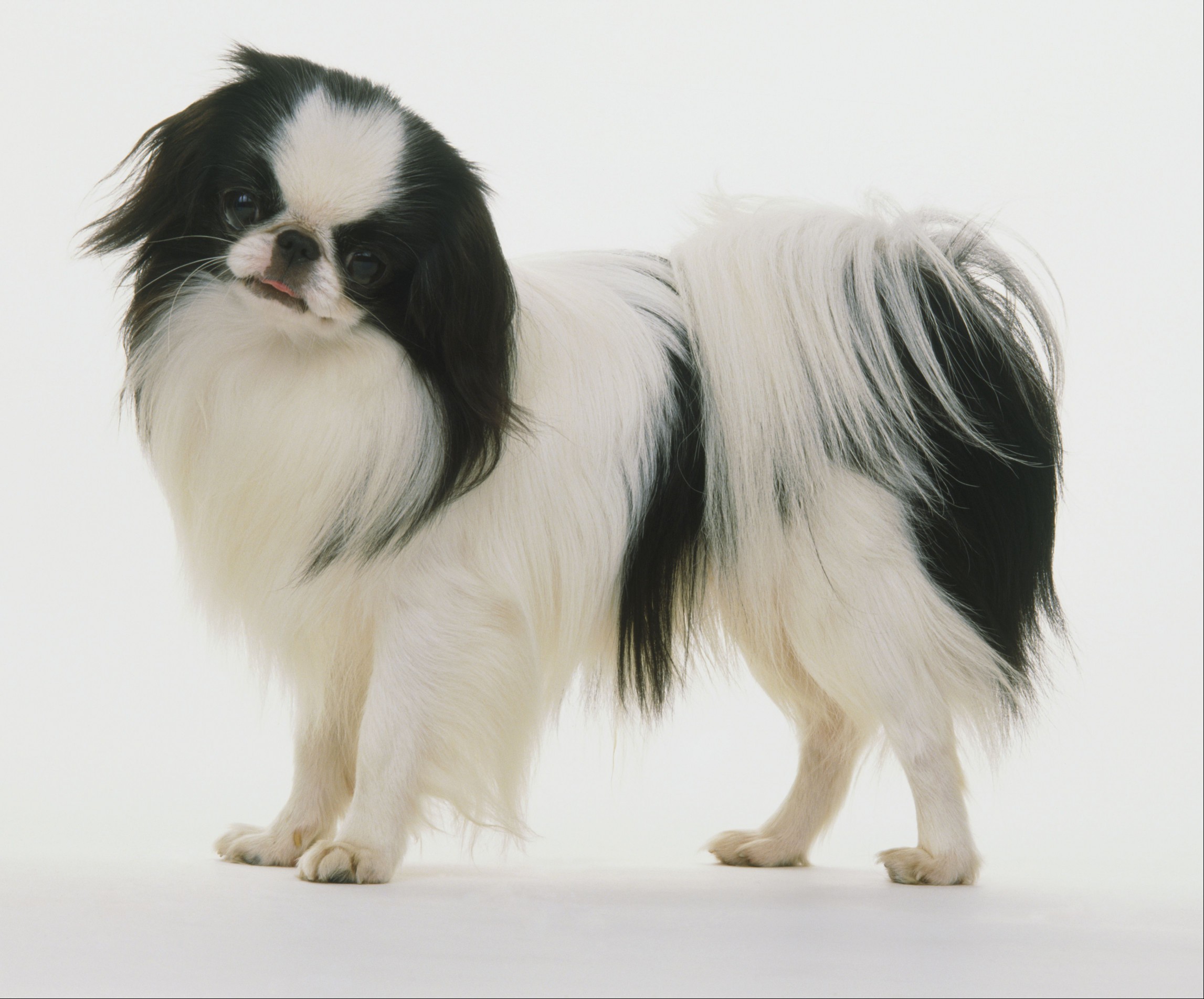
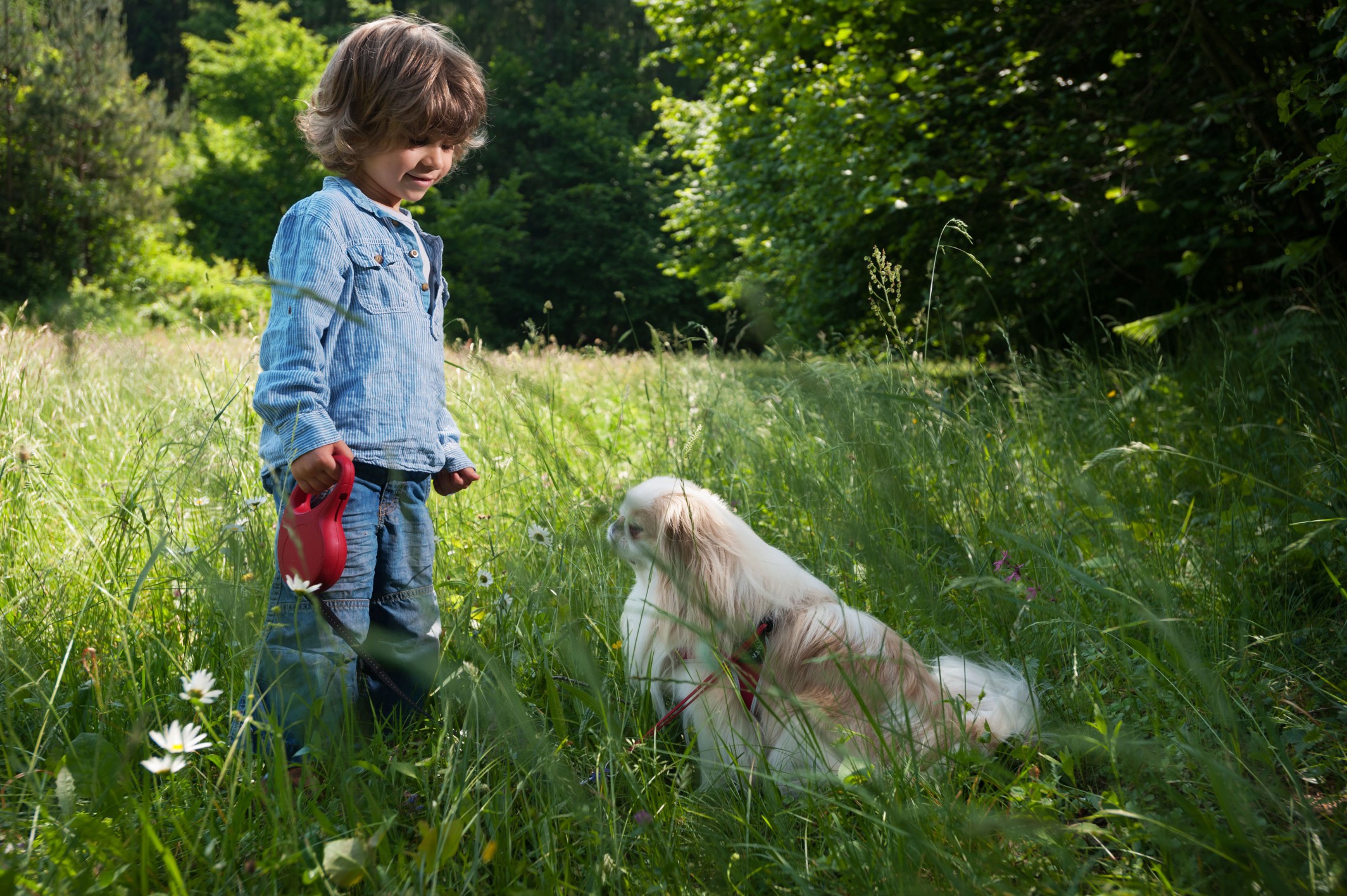
Common Health Problems
The Japanese chin is a relatively healthy breed, but it can be prone to a few congenital conditions. Good breeders health screen potential parents to minimize the risk of inherited issues being passed on.
In addition to heat intolerance, especially during exercise, some other conditions that a Japanese chin can be prone to include:
- Luxating patella: This condition causes the dog's kneecaps to fall out of place.
- Ophthalmic problems: The breed may be prone to cataracts, dry eye (also known as keratoconjunctivitis sicca), entropion (when the eyelid can fold inwards), and corneal abrasions.
- Heart murmur: An early onset heart murmur, which is an abnormal sound in the heart, will typically be found during a puppy's wellness checkup.
- Epilepsy: A potential underlying abnormality, such as a brain tumor, may cause seizures.
- GM2 gangliosidosis: This condition is also known as Tay-Sachs disease. It is a neurological condition that can be fatal and has been known to affect the breed. DNA testing will ensure the disease would not be passed on.
- Brachycephalic syndrome: Because of the shape of their face, a Japanese chin can exhibit symptoms like snoring, noisy breathing, difficulty breathing, and exercise intolerance.
Diet and Nutrition
While it can be easy to fall into the habit of free-feeding or spoiling with table scraps, the Japanese chin can be prone to obesity and must be fed a healthy, high-quality diet that is appropriately portion controlled.
The amount fed will vary depending on the individual dog, their age, and activity levels.
A fresh and plentiful water source should always be available, and this is all the more important because of the breed's heat intolerance issues.
Where to Adopt or Buy a Japanese Chin
Expect to pay $1,500 to $2,500 for a Japanese chin puppy.
If you are buying a Japanese chin puppy, it is incredibly important to do your research and seek out a reputable breeder. The breeder should perform the appropriate genetic health checks on the parents, and the puppies should have the best start, staying with mom in a nurturing home environment.
While the breed is not a common one, it is possible to adopt a Japanese chin from a shelter or a breed-specific rescue. Dog adoption can be a hugely rewarding experience.
Below are some useful breed and adoption links:
- Japanese Chin Club of America Breeder Directory
- Japanese Chin Care and Rescue Effort
Japanese Chin Overview
The Japanese chin is perfect for anyone looking for a small dog with a fun and loving personality. These attractive dogs are low-maintenance when it comes to grooming, but because this is a brachycephalic breed, steps need to be taken to ensure their health and safety when the temperature rises and when they’re exercising.
Pros of Japanese Chins
- Great companion, sociable, and loyal
- Low-maintenance grooming
- One of the quietest breeds
Cons of Japanese Chins
- Strong-willed, independent, requires patience during training
- Cannot tolerate heat
- Prone to obesity
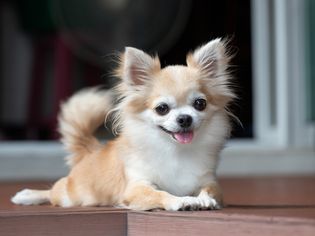
More Dog Breeds and Further Research
It is important to fully research what it's like to share your home with a Japanese chin. Seek out a reputable breeder or consider the rewarding adoption route, and also consider reaching out to other pet parents of the breed for in-depth insight.
If you are interested in similar breeds to the Japanese chin, you may also wish to consider the following:
- Shih Tzu
- Pug
- Chinese Crested
- Cavalier King Charles Spaniel
There’s a great variety of dog breeds out there with a host of different traits and characteristics—doing your research will help you understand which ones may be best suited to your lifestyle!
- Are Japanese chins good pets?
Japanese chins make great pets for individuals and families. These small dogs are loyal and affectionate, they like to cuddle on your lap, and they are smart and friendly.
Do Japanese chins bark a lot?The Japanese chin doesn’t bark a lot. They will typically only bark when necessary, so you never have to worry about annoying your neighbors.
Can Japanese chins be left alone?Japanese chins can be left alone for short stretches of time. These dogs can develop separation anxiety, so they need plenty of interaction and attention daily, and shouldn’t be alone for too long.

